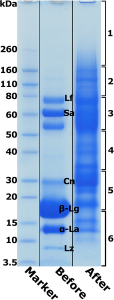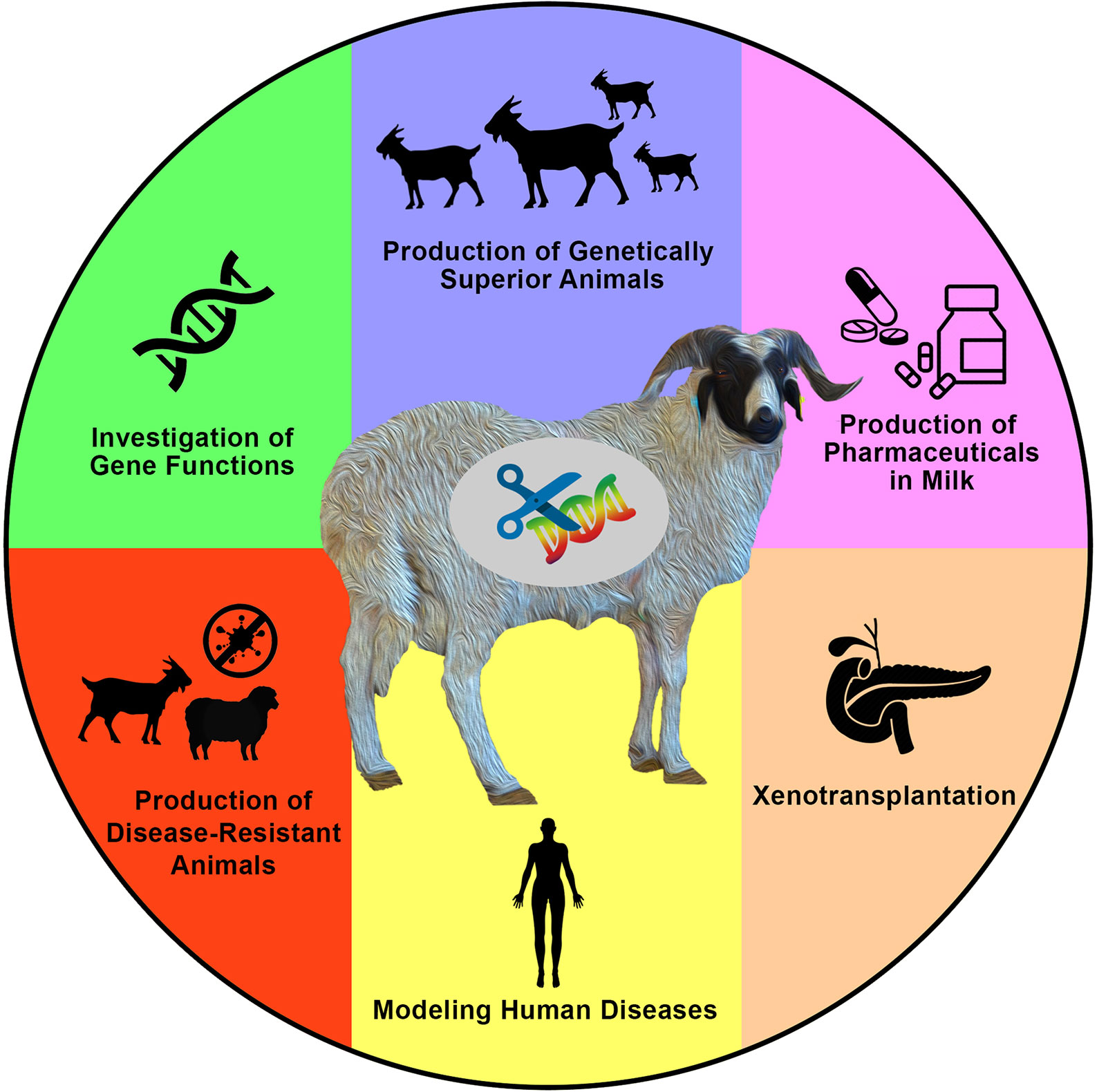Cusabio Ovis aries Recombinant
Introduction
The rumen microbiota plays an important role in the functional attributes of animals. These microbes are indispensable for the normal physiological development of the rumen and can also convert the vegetable polysaccharides in the grass into available milk and meat, making them very valuable to humans. Exploring the microbial composition and metabolites of the rumen throughout developmental stages is important for understanding ruminant nutrition and metabolism.
However, relatively few reports have investigated the microbiome and metabolites at developmental stages in ruminants. Using 16S rRNA gene sequencing, metabolomics, and high-performance liquid chromatography techniques, we compared rumen microbiota, metabolites, and short-chain fatty acids (SCFAs) between subadult Tibetan lambs and Ovis aries (sheep) Recombinant from Qinghai-Tibetan. Plateau. Bacteroidetes and Spirochaetae were more abundant in subadult sheep, while Firmicutes and Tenericutes were more abundant in young individuals. Subadult individuals had higher alpha diversity values than young sheep.
Metabolomic analysis showed that essential amino acid content and functional pathways of related genes in the rumen were different between lambs and the subadult population. L-Leucine, which participates in the biosynthesis of valine, leucine, and isoleucine, was more abundant in lambs, while phenylethylamine, which participates in phenylalanine metabolism, was richer in subadults. Both rumen microbial community structures and metabolite profiles were affected by age, but rumen SCFA concentration was relatively stable between different age stages.

Some specific microbes (eg, Clostridium and Ruminococcaceae) were positively associated with L-leucine but negatively correlated with phenylethylamine, implying that rumen microbes may play different roles in metabolite production at different ages. Mantel test analysis showed that rumen microbiota was significantly correlated with metabolomics and SCFA profiles. Our results indicate the close relationship between microbial composition and metabolites, and also reveal different nutritional requirements for different ages in ruminants, which is of important importance for regulating animal nutrition and metabolism through the intervention of the microbiome.
Materials and methods
- Animal feeding and sampling
Rumen contents were collected between February and July from the Plateau Modern Ecological Animal Husbandry Demonstration Area (100.9518°E, 36.9181°N) of Haibei. After anaesthetizing the sheep with diethyl ether and dissecting them, we obtained a total of 12 rumen samples from 1-month-old Tibetan sheep (the lamb group, abbreviated as ES; N = 6) and 6 months of age (the subadult group). ). , abbreviated as SS; N = 6) in the same cohort. Three servings (~5 g per serving) were taken from the contents of the fore, mid, and hind rumen and mixed well before sample collection.
These Tibetan sheep were all male. Subadult individuals grazed on pastures (main grass included Kobresia humilis, Oxytropis ochrocephala, Poa sp.) in the Qinghai-Tibet Plateau and fed commercial feed No. 8876 (Yongxing Ecological Agriculture and Animal Husbandry Development Co., Ltd. in Mengyuan County) at dusk. The main nutritional components of this commercial feed include crude protein ≥ 16%, crude fat ≥ 3%, crude fibre ≤ 8.0%, and crude ash ≤ 9.0%. The daily food consumption of the subadult individuals was 4.75 ± 0.32 kg.
The lambs were fed mainly milk, and also ate a small amount of grass (~0.72 ± 0.0.07 kg) and commercial feed (~0.54 ± 0.0.12 kg) mentioned above. Drinking water was freely available to these Tibetan sheep. The bodyweight of the lamb and subadult groups was 15.75 ± 5.90 and 26.35 ± 4.01 kg, respectively. After harvest, the ruminal content was immediately divided into three parts on ice for the subsequent microbiome, metabolome, and short-chain fatty acid (SCFA) analysis, and temporarily kept in a portable refrigerator at -20 °C in the field. . Finally, all samples were transferred to our laboratory within 24 h and stored in a -40 °C refrigerator.
- Metabolomics measurement
100 mg of the ruminal contents were transferred to 5 ml centrifuge tubes and then 500 μL of ddH2O (4 °C) was added to the tubes. The mixture was thoroughly mixed by vortexing for 60 sec. Thereafter, 1000 ul of methanol (precooled to -20 °C) was added to the samples, and the mixed liquids were stirred for 30 s. Thereafter, we placed the tubes in an ultrasound machine at room temperature for 10 minutes and then stewed them for 30 minutes on ice. Samples were centrifuged for 10 min at 14,000 rpm at 4°C, and then 1.2 mL of supernatant was transferred to a new centrifuge tube.

The samples were blow-dried by concentration in vacuo. The samples were then dissolved using 400 μl of aqueous methanol solution (1:1, 4 °C) and subjected to 0.22 μm membrane filtration. For quality control (QC) samples, 20 μL of prepared samples were drawn and pooled. These quality control samples were used to control deviations in the analytical results of these pool mixes. Finally, the samples were ready for LC-MS detection (Waters, Milford, MA, USA). More detailed methods for LC-MS procedures are described in the previous report.
The original data obtained were converted to mzXML format using the Proteowizard software (v3.0.8789). The metabolomics data was then subjected to peak identification, filtering and alignment using the XCMS package in R (v3.3.2). In order to compare data of different magnitude, the peak area was normalized for further statistical analysis.
- Measurement of short-chain fatty acids
Short-chain fatty acid (SCFA) profiles of ruminal content samples were measured using an Agilent 1100 series high-performance liquid chromatography (HPLC) system (Agilent Technologies, Santa Clara, CA, USA). We measured the concentration of acetate, propionate, butyrate, isobutyrate, valerate, isovalerate, and hexanoate using an Alltech IOA-2000 organic acid column. Detailed procedures for measuring SCFA.
Conclusion
In conclusion, we found that both rumen microbial community structures and metabolite profiles of Tibetan sheep were distinct at different ages, but rumen SCFA concentration was relatively stable between the two age stages. In particular, the metabolomic analysis showed that rumen essential amino acid nutritional requirements were different between lambs and subadult Tibetan ewes.
We found that L-Leucine, which is involved in the biosynthesis of valine, leucine, and isoleucine, was more abundant in lambs, while phenylethylamine, which is involved in phenylalanine metabolism, was richer in subadults. Furthermore, rumen microbiota was associated with metabolomics and SCFAs, indicating the close relationship between microbial composition and metabolites. These results have important significance for regulating animal nutrition and health through the intervention of the microbiome.

